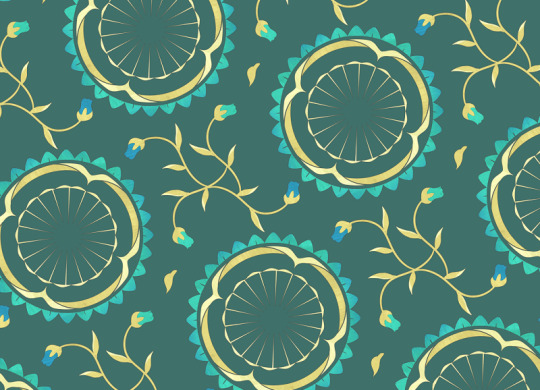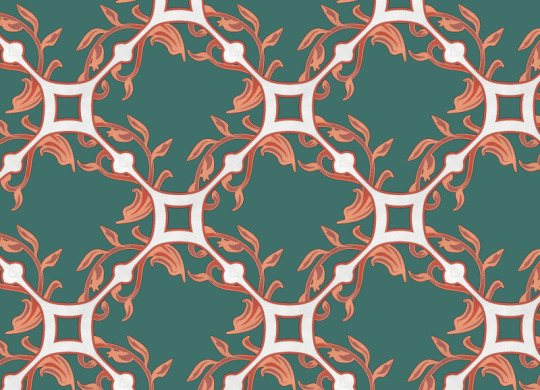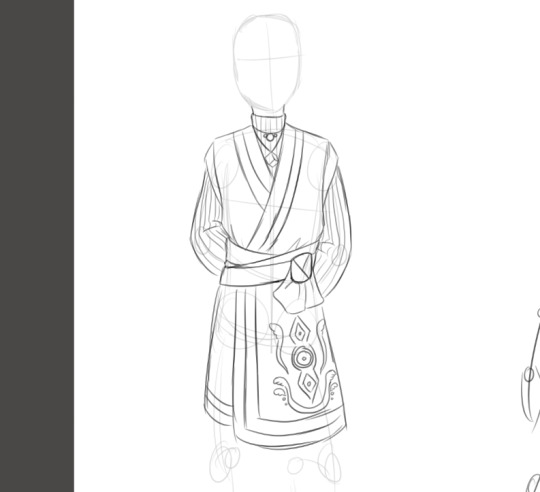#Textile Export
Explore tagged Tumblr posts
Text


decided to go nutso freako and finish a complicated pattern set for the last drop of the year (honestly a very relaxing process)
they'll be up soon 😖 watch this space
#born to make pretty textile designs forced to have uhh two cancelled projects#my art#the tricky thing about patterns is exporting them in a way that makes sense so wish me luck
109 notes
·
View notes
Text

Kellin Quinn, Madness
2 thread cross stitch on 18ct aida
#kellin quinn#sleeping with sirens#cross stitch#fibre arts#textile art#embroidery#mine#i made this#fanart#I'm back at it#we're doing emo dads with little tiny crosses of thread#this was way quicker than Gerard#brought it as a project for a hiking trip to the mountains#(currently on the hoops is a music video screencap from ATL's Tell Me I'm Alive... if anyone's curious)#oh and yes I exported a shareable pattern if anyone's interested#with notes on how non of the colours are real haha
61 notes
·
View notes
Text
Last Line Challange
Tagged by @raphaerolo (thanks!!)
Working on a reference for some Cæruleans in my WondLa Raised Above Ground AU; this one is a fashionable young Cærulean who plays a large part in the AU :) Last line is in the arm to our right.
FINALLY got my ass to motivate and work on something digital 😭

mmmm tagging @airborneice @jetcat-14 @vanillapie-80 @eurazba and anyone else who wants to participate!
#drawing on my knowledge of jedi robes slightly for this design lmao#not a cross over with star wars but i do love the outfit designs from that#this gal is a tailor! my headcanon is that faunus is a big textile creator/exporter so i wanted to play into that#beans art#tag game#lmao im still getting re-used to my mini tablet. sketching is helping though
9 notes
·
View notes
Text
[T]he Dutch Republic, like its successor the Kingdom of the Netherlands, [...] throughout the early modern period had an advanced maritime [trading, exports] and (financial) service [banking, insurance] sector. Moreover, Dutch involvement in Atlantic slavery stretched over two and a half centuries. [...] Carefully estimating the scope of all the activities involved in moving, processing and retailing the goods derived from the forced labour performed by the enslaved in the Atlantic world [...] [shows] more clearly in what ways the gains from slavery percolated through the Dutch economy. [...] [This web] connected them [...] to the enslaved in Suriname and other Dutch colonies, as well as in non-Dutch colonies such as Saint Domingue [Haiti], which was one of the main suppliers of slave-produced goods to the Dutch economy until the enslaved revolted in 1791 and brought an end to the trade. [...] A significant part of the eighteenth-century Dutch elite was actively engaged in financing, insuring, organising and enabling the slave system, and drew much wealth from it. [...] [A] staggering 19% (expressed in value) of the Dutch Republic's trade in 1770 consisted of Atlantic slave-produced goods such as sugar, coffee, or indigo [...].
---
One point that deserves considerable emphasis is that [this slave-based Dutch wealth] [...] did not just depend on the increasing output of the Dutch Atlantic slave colonies. By 1770, the Dutch imported over fl.8 million worth of sugar and coffee from French ports. [...] [T]hese [...] routes successfully linked the Dutch trade sector to the massive expansion of slavery in Saint Domingue [the French colony of Haiti], which continued until the early 1790s when the revolution of the enslaved on the French part of that island ended slavery.
Before that time, Dutch sugar mills processed tens of millions of pounds of sugar from the French Caribbean, which were then exported over the Rhine and through the Sound to the German and Eastern European ‘slavery hinterlands’.
---
Coffee and indigo flowed through the Dutch Republic via the same trans-imperial routes, while the Dutch also imported tobacco produced by slaves in the British colonies, [and] gold and tobacco produced [by slaves] in Brazil [...]. The value of all the different components of slave-based trade combined amounted to a sum of fl.57.3 million, more than 23% of all the Dutch trade in 1770. [...] However, trade statistics alone cannot answer the question about the weight of this sector within the economy. [...] 1770 was a peak year for the issuing of new plantation loans [...] [T]he main processing industry that was fully based on slave-produced goods was the Holland-based sugar industry [...]. It has been estimated that in 1770 Amsterdam alone housed 110 refineries, out of a total of 150 refineries in the province of Holland. These processed approximately 50 million pounds of raw sugar per year, employing over 4,000 workers. [...] [I]n the four decades from 1738 to 1779, the slave-based contribution to GDP alone grew by fl.20.5 million, thus contributing almost 40% of all growth generated in the economy of Holland in this period. [...]
---
These [slave-based Dutch commodity] chains ran from [the plantation itself, through maritime trade, through commodity processing sites like sugar refineries, through export of these goods] [...] and from there to European metropoles and hinterlands that in the eighteenth century became mass consumers of slave-produced goods such as sugar and coffee. These chains tied the Dutch economy to slave-based production in Suriname and other Dutch colonies, but also to the plantation complexes of other European powers, most crucially the French in Saint Domingue, as the Dutch became major importers and processers of French coffee and sugar that they then redistributed to Northern and Central Europe. [...]
The explosive growth of production on slave plantations in the Dutch Guianas, combined with the international boom in coffee and sugar consumption, ensured that consistently high proportions (19% in 1770) of commodities entering and exiting Dutch harbors were produced on Atlantic slave plantations. [...] The Dutch economy profited from this Atlantic boom both as direct supplier of slave-produced goods [from slave plantations in the Dutch Guianas, from Dutch processing of sugar from slave plantations in French Haiti] and as intermediary [physically exporting sugar and coffee] between the Atlantic slave complexes of other European powers and the Northern and Central European hinterland.
---
Text above by: Pepijn Brandon and Ulbe Bosma. "Slavery and the Dutch economy, 1750-1800". Slavery & Abolition Volume 42 (2021), Issue 1. Published online 28 February 2021. DOI at: doi dot org slash 10.1080/01440396 . 2021. 1860464 [Text within brackets added by me for clarity and context. Bold emphasis and some paragraph breaks/contractions added by me. Presented here for commentary, teaching, criticism.]
#abolition#these authors lead by pointing out there is general lack of discussion on which metrics or data to use to demonstrate#extent of slaverys contribution to dutch metropolitan wealth when compared to extensive research#on how british slavery profits established infrastructure textiles banking and industrialisation at home domestically in england#so that rather than only considering direct blatant dutch slavery in guiana caribbean etc must also look at metropolitan business in europe#in this same issue another similar article looks at specifically dutch exporting of slave based coffee#and the previously unheralded importance of the dutch export businesses to establishing coffee mass consumption in europe#via shipment to germany#which ties the expansion of french haiti slavery to dutch businesses acting as intermediary by popularizing coffee in europe#which invokes the concept mentioned here as slavery hinterlands#and this just atlantic lets not forget dutch wealth from east india company and cinnamon and srilanka etc#and then in following decades the immense dutch wealth and power in java#tidalectics#caribbean#archipelagic thinking#carceral geography#ecologies#intimacies of four continents#indigenous#sacrifice zones#slavery hinterlands#european coffee#indigenous pedagogies#black methodologies
50 notes
·
View notes
Text
Textiles products exporters in Gujarat | entailglobal
Entail Global stands out as one of the top 10 exporters of textile products, offering a wide range of high-quality textiles for global markets. As the best exporter of textile products in Gujarat, we are committed to delivering superior craftsmanship and exceptional service. Our reputation as the best exporter in Gujarat reflects our dedication to excellence and customer satisfaction.
Whether you are sourcing premium fabrics or innovative textile solutions, Entail Global is your trusted partner in the industry.
#Textiles products exporters in Gujarat#Top 10 exporter of textile products#Best exporter of textile products#Best exporter in Gujarat#India#Export and Import#Business#Logistics#Transportation#global trade#overseas business#textiles
3 notes
·
View notes
Text
Top Benefits of Using a Bowl Mangle Drying Range in Textile Industry

Boost textile processing efficiency with KEW Engg. & Mfg. Pvt. Ltd.'s Bowl Mangle Drying Range! 🌟 Achieve uniform fabric drying, energy savings & top-quality finishing. 🔹 Contact us now!
#kewengg#machinemanufacture#industrial#machinery#machine#manufacturer#exporter#supplier#Bowl Mangle Drying Range#textile processing#textile processing machinery
2 notes
·
View notes
Text
The Liner Drying Machine is an advanced industrial device designed to remove excess moisture from liner materials and control the drying. It guarantees drying occurs uniformly while maintaining the integrity of the material by consolidating heating processes.
#krishnaengineeringworks#machine#manufacturer#industry#industrial#export#supplier#machinemanufacturer#liner drying machine#technical textile#textile industry
2 notes
·
View notes
Text

GEO Fabric Tube Manufacturer in Gujarat
We are a premier GEO Fabric Tube Manufacturer in Gujarat, specializing in high-quality geotextile tubes for applications like dewatering, shoreline protection, and sediment control. Our tubes are made from durable woven geotextiles, engineered to provide excellent strength, filtration, and environmental resistance. Utilizing advanced manufacturing processes, we deliver customized solutions tailored to meet diverse project requirements across construction, marine, and environmental sectors.
#GEO Textile Company#GEO Textile Exporter#GEO Fabric Tube Manufacturer in Vadodara#GEO Fabric Tube Manufacturer in Gujarat
0 notes
Text
Unveiling Bangladesh's Textile Titans: Top Clothing Manufacturers and Exporters
#apparel supplier#Bangladeshs#Clothing#Exporters#Manufacturers#Textile#Titans#Top#Top Clothing Manufacturers Suppliers Exporters in Bangladesh#Unveiling
0 notes
Text
Can the Textile Industry Survive Global Warming? 🌍 Challenges and Opportunities Ahead
The textile industry, a global economic powerhouse, now faces one of its biggest threats: global warming. Rising temperatures, unpredictable weather patterns, and resource scarcity are forcing the industry to rethink its practices.
🔥 The Key Challenges:
1️⃣ Water Scarcity Textile production, especially dyeing and finishing, requires massive water consumption. Global warming is already causing severe droughts, reducing water availability for manufacturing hubs.
2️⃣ Energy Intensive Processes Traditional textile manufacturing heavily depends on fossil fuels. As carbon emissions increase, so do regulations and energy costs, challenging profitability.
3️⃣ Raw Material Disruption Natural fibers like cotton are highly sensitive to climate shifts. Unpredictable yields and lower quality crops put strain on supply chains.
4️⃣ Consumer Pressure Today's consumers are increasingly aware of sustainability. Brands failing to adapt face reputational risks and declining customer loyalty.
🌱 The Emerging Opportunities:
✅ Sustainable Innovation Companies investing in eco-friendly fibers (e.g., organic cotton, hemp, recycled polyester) are gaining a competitive edge.
✅ Circular Economy Models Recycling, upcycling, and closed-loop production reduce waste and appeal to conscious consumers.
✅ Green Energy Adoption Switching to solar, wind, and energy-efficient technologies reduces carbon footprint and operational costs.
✅ Transparency & Traceability Digital tools (like blockchain and AI) allow brands to track sustainability metrics, building trust with both regulators and customers.
0 notes
Video
youtube
TOP 20 MAIORES EXPORTADORES DE PRODUTOS TÊXTEIS DO MUNDO
0 notes
Text

Clean and Comfortable: Ceresana Study on the Growing Global Market for Surfactants
A life without surfactants? It might be possible, but it would be quite dirty and greasy. Surfactants are among the most important and most frequently used chemicals because they can mix water and oil, form foam, and dissolve dirt. The latest market report by Ceresana shows that surfactants are currently sold worldwide for more than USD 49 billion per year. For these cleansing and surface-active substances, the market study forecasts further sales growth of 3.6% per year on average until 2033. The Asia-Pacific region is by far the largest consumer of surfactants with more than a third of the world market share.
Further information on the new edition of the market study “Surfactants – World”: https://ceresana.com/en/produkt/surfactants-market-report-world
#surfactants#chemicals#cleaners#detergents#production#import#export#sales#price#demand#applications#producers#manufacturers#chemistry#industrial cleaners#body care#cosmetics#textiles#leather#paints#plastics
0 notes
Text
How Trump's 'liberation day' tariffs will impact China
A chinese flag is seen in the financial district of Shanghai on April 7, 2025. Asian equities collapsed on a black Monday on April 7 for markets after China hammered the United States with its own hefty tariffs, ramping up a trade war many fear could spark a recession. (Photo by HECTOR RETAMAL / AFP) By Luna Lin and Oliver Hotham Beijing, China (AFP) – US President Donald Trump has slapped…
#Beijing countermeasures#China#electrical machinery#electronics#export competition#textiles and clothing#trade war#United States#US President Donald Trump
0 notes
Text
Textiles products exporters in Gujarat | entailglobal
Entail Global is a prominent name among textiles products exporters in Gujarat, offering a wide range of high-quality textile solutions. As one of the top 10 exporters in India and top 10 exporters of textiles products, we are committed to delivering superior products to global markets. Recognized as the best exporter in India, we take pride in our exceptional service and timely deliveries.
As a top 10 textiles products exporter in Gujarat, Entail Global is your trusted partner for all textile export needs, ensuring quality and reliability in every shipment.
#Textiles products exporters in Gujarat#Top 10 exporters in India#Top 10 exporters of textiles products#Best exporter in India#Top 10 textiles products exporter in Gujarat#India
5 notes
·
View notes
Text
ट्रम्प के टैरिफ से भारत को मिलेगा बड़ा मौका: कपड़ा, इलेक्ट्रॉनिक्स और सेमीकंडक्टर में बनेगा नंबर 1?
Delhi News: अमेरिकी राष्ट्रपति डोनाल्ड ट्रम्प ने 2 अप्रैल 2025 को भारत सहित कई देशों पर रेसिप्रोकल टैरिफ की घोषणा की, जिसने वैश्विक व्यापार में हलचल मचा दी। भारत पर 27% टैरिफ लगाया गया है, जबकि चीन पर कुल 54% (34% नया + 20% पहले से), वियतनाम पर 46%, और बांग्लादेश पर 37% टैरिफ थोपा गया है। यह नया टैरिफ तुरंत लागू नहीं होगा। 5 अप्रैल 2025 से 10% का बेसलाइन टैरिफ शुरू होगा, और भारत पर अतिरिक्त 27%…
#auto components India#China tariff 54%#competitive edge India#electronics sector India#global trade shift#India vs China trade#Indian economy benefits#Indian textile industry#PLI scheme India#reciprocal tariff 2025#semiconductor opportunities#textile exports USA#Trump tariff April 2025#Trump tariff India#US tariff impact
0 notes
Text
Today, cloth inspection machines are no longer a luxury, but a smart investment for someone serious about the quality of their fabrics. At Krishna Engineering Works, you receive advanced, reliable machines that save you time and cost, thereby guaranteeing flawless delivery every time.
#krishnaengineeringworks#machine#manufacturer#machinery#export#supplier#industry#industrial#machines#clothinspectionmachines#inspectionmachine#textiles#textileindustry
2 notes
·
View notes